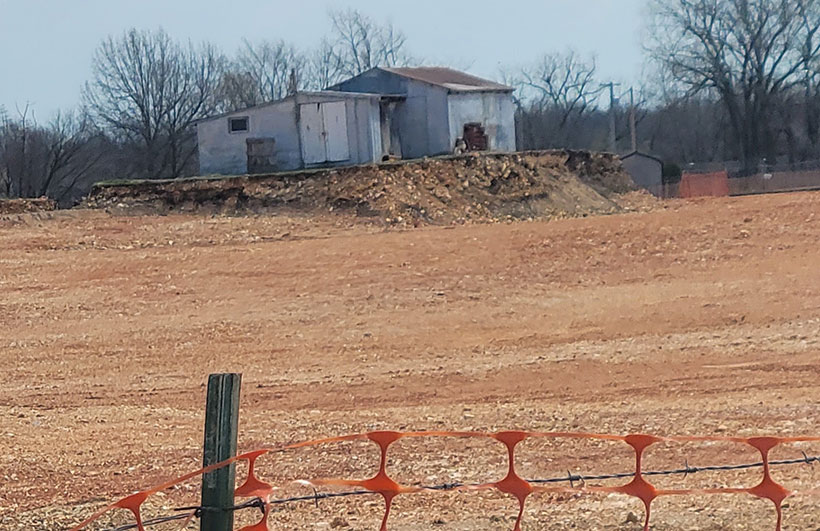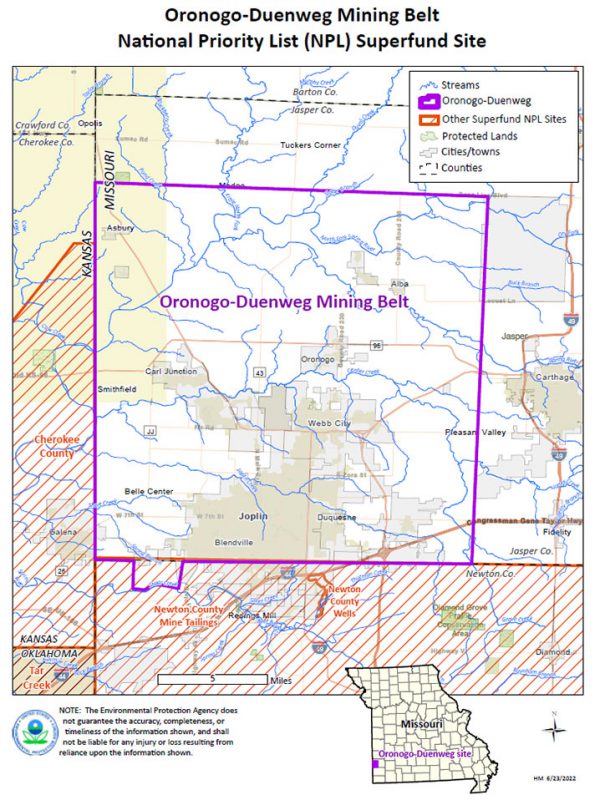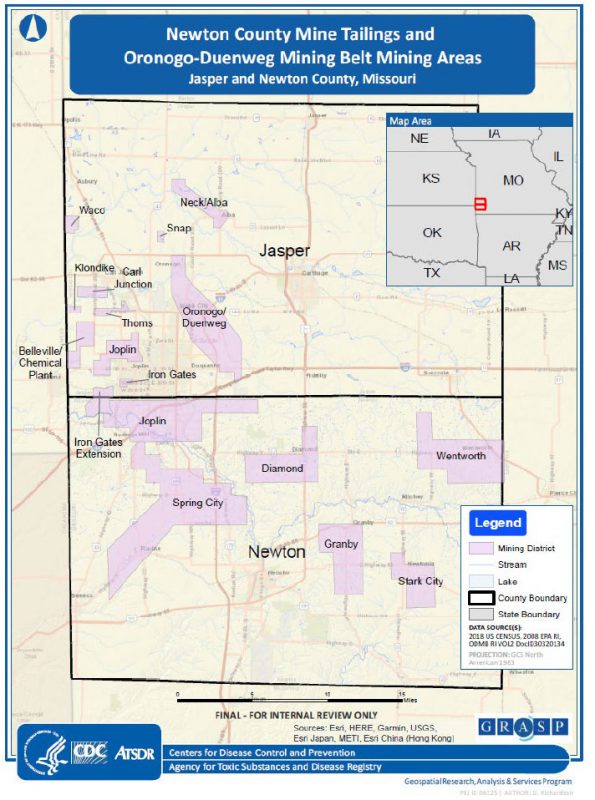Overview
This exposure investigation will measure lead in children, pregnant women and women of childbearing age, and their environments.
Missouri’s Jasper and Newton Counties are home to the Oronogo-Duenweg Mining Belt and the Newton County Mine Tailings Superfund Sites. Homes on or near these sites may have lead contaminated soil from historic lead mining, milling, and smelting activities. Lead can harm the health of young children and unborn babies. Lead can be found throughout the environment:
- Homes in Jasper and Newton Counties may have lead contaminated soil from historic lead mining, milling, and smelting activities. Children can accidentally swallow dirt in yards and swallow or breath lead in dust.
- Homes built before 1978 (when lead-based paints were banned) probably contain lead-based paint. When the paint peels and cracks, it makes lead dust. Children can be exposed to lead when they swallow or breathe in lead dust.
- Certain water pipes may contain lead.
- Lead can be found in some products such as toys and jewelry.
- Lead is sometimes in candies or traditional home remedies.
Certain jobs and hobbies involve working with lead-based products, like mining and stain glass work, and may cause parents to bring lead into the home.
We will be testing blood and the indoor and outdoor environments for 225 children under the age of 6, and 75 women who are pregnant or of childbearing age between the ages of 15-44 years old. We will use the results of the tests to better understand how lead in the environment may impact blood lead levels and recommend actions that can be taken to reduce or prevent exposure. Knowing your or your child’s blood lead level can tell you if steps are needed to protect your or your child’s health.
Participants will also fill out a questionnaire so we can try to determine how people may be exposed to lead. This process should take about 30 minutes. Participation could let you know if you or your child have been exposed to lead and how this exposure compares to most children or adults in your community and the United States. Exposure to lead can seriously harm a child’s health and cause well-document adverse effects such as:
- Damage to the brain and nervous system
- Slowed growth and development
- Learning and behavior problems
- Hearing and speech problems
This can cause:
- Lower IQ
- Decreased ability to pay attention
- Underperformance in school
There is also evidence that childhood exposure to lead can cause long-term harm.





